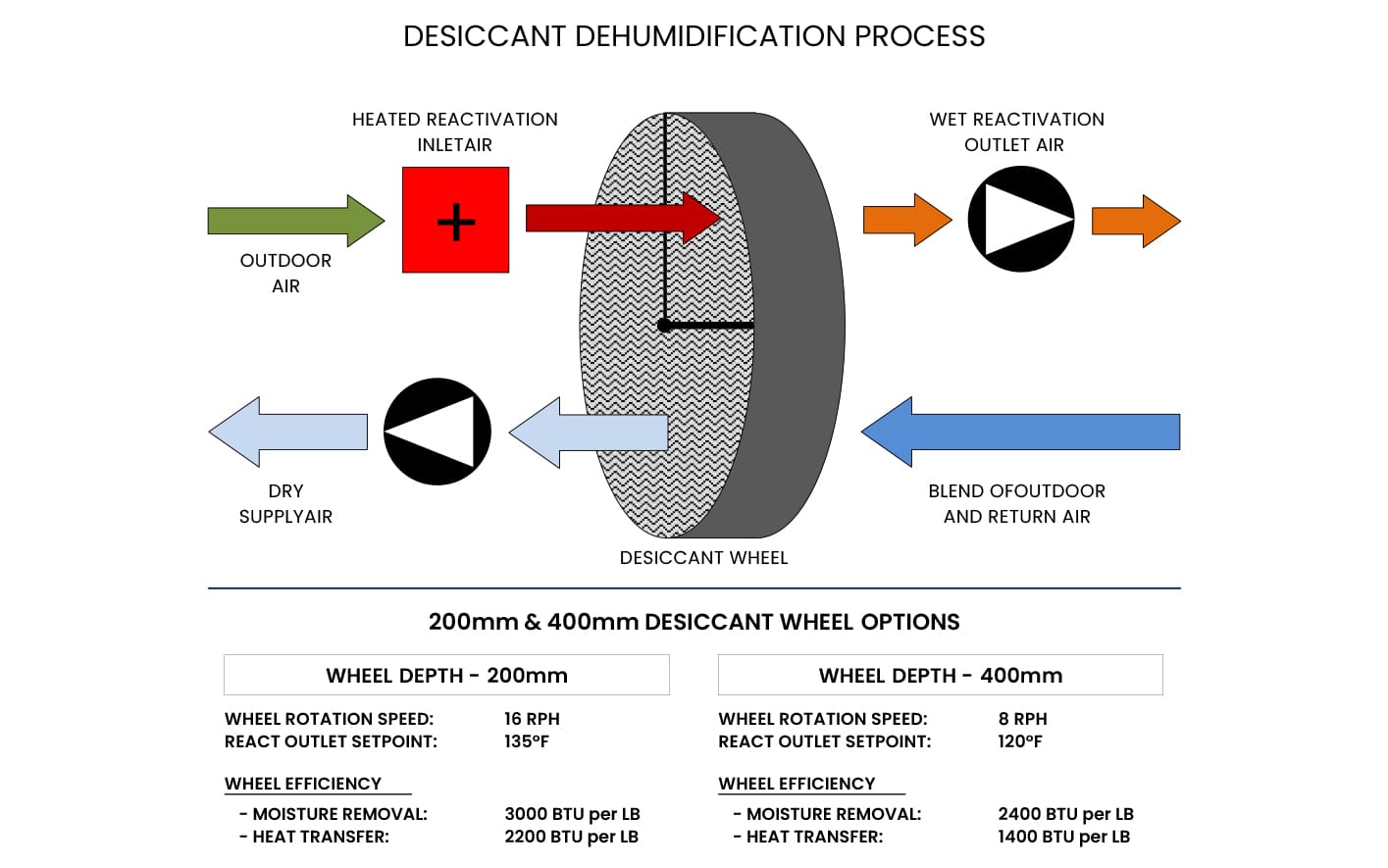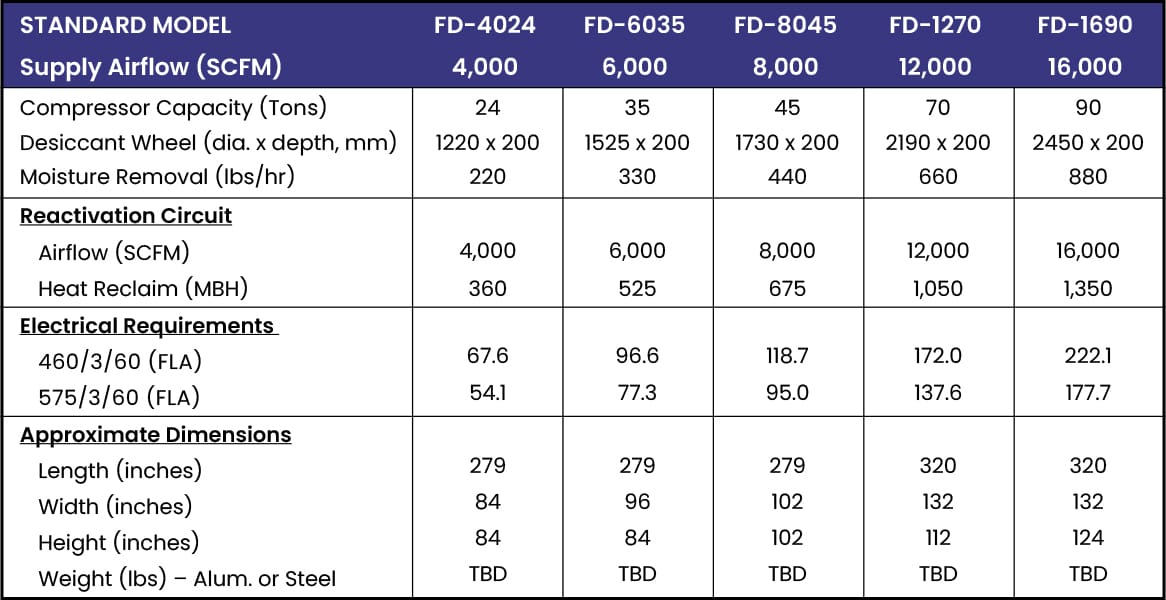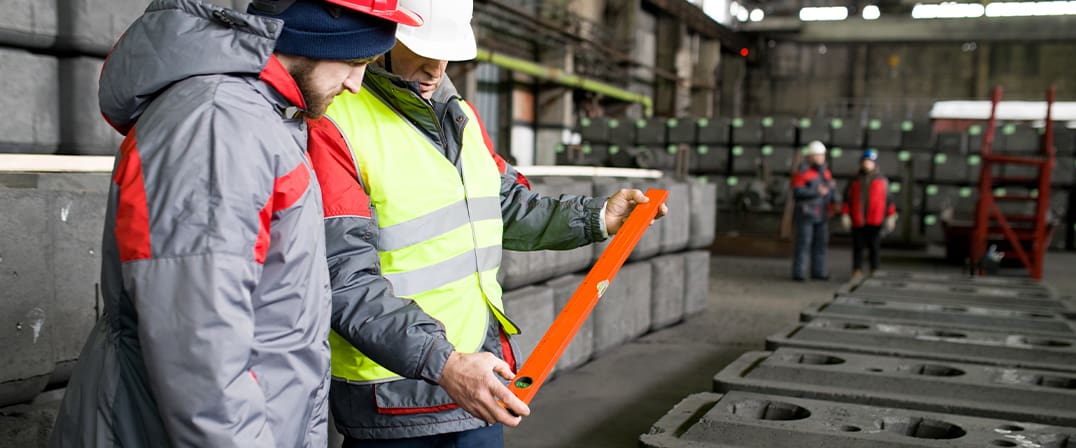High-Temp Desiccant Technology
High-temperature desiccant technology operates by utilizing a desiccant material to adsorb moisture from the air at elevated temperatures. It offers an efficient and effective solution for humidity control in applications where elevated temperatures are present. By allowing for moisture adsorption at high temperatures, these systems provide reliable moisture removal while minimizing energy consumption and operating costs.

Here’s How It Works
ADSORPTION OF MOISTURE
- The process begins with the intake of ambient air from the surrounding environment, which typically contains moisture in the form of humidity.
- The incoming air is directed through a desiccant wheel or rotor, which contains a desiccant material such as silica gel or molecular sieve.
- In high-temperature desiccant systems, the desiccant material is capable of adsorbing moisture from the air even at elevated temperatures.
- The desiccant material has a high affinity for moisture, allowing it to adsorb water vapor from the incoming air as it passes through the wheel.
- As a result, the moisture content in the air is significantly reduced, leading to lower humidity levels in the conditioned space.
REGENERATION OF DESICCANT
- Over time, the desiccant material in the wheel becomes saturated with moisture and needs to be regenerated to maintain its effectiveness.
- Desiccant regeneration is typically achieved by exposing the saturated desiccant material to heat. In high-temperature desiccant systems, this heat is provided by various means, such as natural gas burners, electric resistance heaters, or waste heat from other processes.
- The heat source raises the temperature of the desiccant material, causing the absorbed moisture to evaporate and the desiccant to dry out.
- The regenerated desiccant material is then ready for the next cycle of moisture removal.
EXHAUST OF MOISTURE-LADEN AIR
- During the regeneration process, the moisture-laden air produced by the evaporation of moisture from the desiccant material is exhausted from the system.
- The exhaust air may be vented outside the conditioned space or used for other purposes, depending on the specific system design and application.
CONTROL AND MONITORING
- High-temperature desiccant systems are equipped with controls and sensors to monitor and regulate the operation of the system.
- These controls ensure that the desiccant regeneration process occurs at the appropriate times and temperatures to maintain optimal system performance and efficiency.
- Additionally, the system may be integrated with building automation systems (BAS) or other control systems to coordinate operation with other HVAC equipment and maintain desired indoor conditions.

A-Series delivers maximum moisture removal capacity by incorporating either the 200mm or the more energy efficient 400mm deep active desiccant wheel. The 400mm deep wheel delivers better moisture removal efficiency while transferring less unwanted heat back into the supply air. Better efficiency translates into energy savings and lower operating costs.
The EI Solutions A-Series product line is available in a wide range of standard and pre-engineered sizes. All units are designed to provide ease of serviceability. Access doors are located upstream and downstream of all major components.
Options
- Filter Upgrades
- Energy Recovery Module
- Integrated Cooling & Heating Modules
- Painted Galvanized Steel or Aluminum Construction

Applications

High-temperature desiccant systems are used in applications where elevated temperatures are present, such as industrial processes, manufacturing facilities, and some commercial buildings.
Benefits

High-temperature desiccant technology offers efficient
moisture removal in environments with higher temperatures, providing effective humidity control and energy savings in specific applications.

